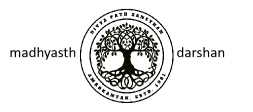Educational Approach
A brief, ‘accessible’ explanation is given below as a ‘small glimpse’.
- For a more robust discussion, see our core Educational Philosophy
Approach: ‘Human-centric view’
- Integral role of the ‘seer’ as the one that is experiencing, living (study of the human, not just abstraction of bodily physiology, anatomy, etc)
- Includes all phases and dimensions of human life, human happiness
- Includes all aspects of nature, reality the human needs to understand, and is related to, and affected by.
Curriculum & classroom practices
- Based on a deep direct-understanding of the nature of existence (reality) and the human being & universal human purpose.
- Integrated view of all subjects as seen from within the experience of actual human living (the way the child, youth, and adult see and experience the world) & their interconnection in nature/the world, not ‘external’ disparate pieces of info
- Addresses all aspects of individual living: spiritual, experiential, intellectual, behavioural, material. Subjects are taught as seen from within this ‘human-frame of living’.
- Includes laws in the natural sciences, laws of behaviour, social laws, and law in intellectual spheres.
- Addresses universal human aspirations of happiness, peace, understanding, prosperity, good character, etc.
- Includes expectations of the Family, Society and Nation from the student, and vice-versa and their interactions thereof.
- Needs, Capabilities & commensurate learning & practices in the life stages of the human: childhood, youth, adult and old-age; whilst living in the Individual, Family, Society, Nation and Inter-Nation spheres.
- Reduce info load, increase practice of relevant skills (math, science, geo) and ‘core-concepts clarity’ focus
Pedagogy & School environment
- Based on a deep understanding of the conscious aspect (chaitanya jeevan and its precise functioning) and the true nature of ‘spirituality’ based on actual existential knowledge, not just mystical intuition or estimations.
- Enabling to ‘see & live’ instead of only ‘learn & reproduce’: guided exploration
- All enviroments the child lives in are take into consideration – in the school, and outside.
- School is an extension of the behavioural environment at home, including affection, care, mutual respect, cooperative responsibilities, seva etc.
- Teacher is in the role of the guru and is responsible for the overall development of the child to to fruition as a complete-human being. Based on personal ‘guru-shishya sambandh‘. The childs development forms part of the teachers practice towards their own personal improvement. Teacher addressed as acharya, or adhyapakji
- Our Understanding of the child’s development is – ages: 0-5: emulation, 5-10: pursuance (obeying), 11-16: discipline, 16-18: self-discipline.
- Although they are English medium schools, all instruction and interaction is bilingual.
- The child’s attention is guided in such a manner that they can address the various elements of their ‘being’ and ‘living’ appropriately.
- Concept-based approaches to math and sciences, where it is first instilled in imagination, the utility & observational in nature is taught, then the theory
- The syllabus is also planned such that the words for concepts they will require to understand later are introduced a few years prior.
- Our Methods of Teaching
- Meaningful Dialogue
- Appreciation
- Guided Practice
- Collaborative Project – project based learning
- Peer Learning and Higher Learning
- Life-long learning concepts, social-character, daily routine (health & work)
- Connect content with living – living in a family and participating in family vocations – increase production + physical work mentality.
- Math Practice at the beginning of every day
- Village Surveys
- Production Activities – to meaningfully use the organs of action
- Non-competitive games and sports – self competitive not with each other
- Debriefing
- Bother teachers and parents are facilitated via Jeevan Vidya workshops and the understanding of the underlying philosophies to get this integral-view.
Assessment approaches
- Both quantitative and qualitative methods of assessment are used, as needed.
- Comparison for competition not done. Used as tools for personal improvement. Others successes are celebrated and emulated.
- Covers the following areas.
- Material Aspect
- Healthy development of sensory aspects, brain, body strength, agility, etc.
- Skills learning, willingness for physical work, sincerity
- Behavioural Aspect
- Tendencies, bhaavas, expression – verbal and others, commitment to relationship
- Participation at home in multiple dimensions – behaviour & seva
- Societal interaction, character, appreciation of place in Human society.
- Intellectual aspect
- Memory and recall
- Language & Math, computation
- Critical reasoning, understanding
- Qualitative application in life: wisdom/ viveka.
- Spiritual, Existential Aspect
- Clarity on human life, consciousness, goals, purpose
- Existential nature of the Universe and its components
- Knowledge of laws of the Material world
- Clarity on how all this information and knowledge is related to individual, familial and societal happiness, contentment & well-being
***
See inputs provided to the National Curriculum Framework as part of the National Education Policy for India (NEP) 2022
Also see concept note on higher education: Value Education for Consciousness Transformation
